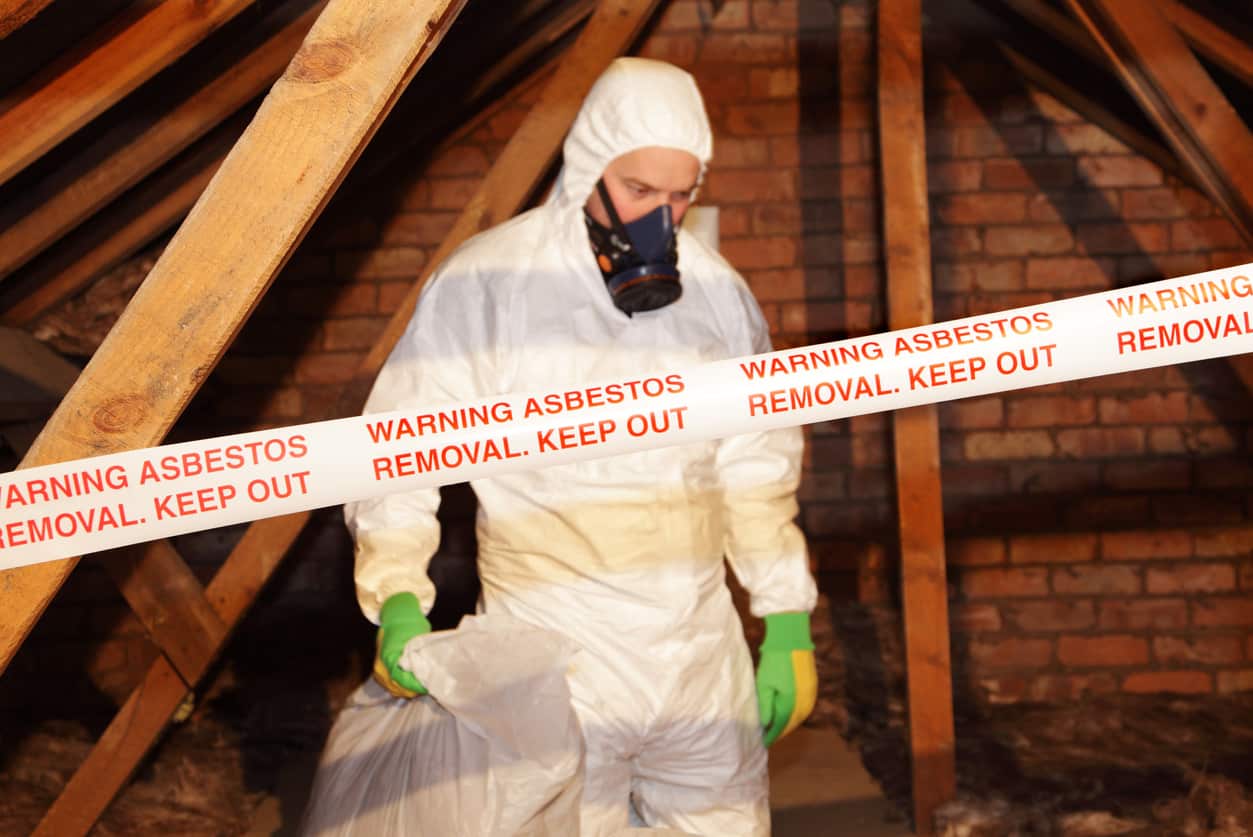
The statistics on workplace deaths and injuries in Canada are sobering. On an average day, three people who leave home for work won’t return home again, while hundreds more will acquire an injury or illness which could result in disability. Sadly, these numbers only scratch the surface of the problem, as many incidents go unreported or under-reported.
People with jobs in the construction and mining industries are some of the workers most at-risk for a workplace fatality or injury. But even after they clock off for the day – or even retire completely(!) – the risks of their working environments can follow them home.
In this blog post, I examine how long-term occupational asbestos exposure can put people at risk for developing serious health issues long after their time on a construction site or in an asbestos mine.
Asbestos in the Environment, at Home or at Work
Asbestos is a naturally occurring group of fibrous minerals often used in building materials or automotive parts due to its flexibility, durability, and resistance to heat, fire and chemicals. Chrysotile (white asbestos), amosite (brown asbestos), crocidolite (blue asbestos), actinolite, anthophyllite, and tremolite were all used for different purposes commercially, but chrysotile asbestos is most common as its fibres are most flexible.
Asbestos fibres are known to be carcinogenic. If left undisturbed in an environment they generally pose little risk; however, once airborne they can be consumed or inhaled and become lodged in a person’s gastrointestinal tract or lungs. While the human body has an amazing ability to self-clean its lung lining, it has little capacity to expel asbestos fibres and they can remain in the body indefinitely.
It is likely that everyone has been exposed to very small amounts of asbestos fibres while going about their daily lives. Other people may have had more intense short-term exposures at moderate or high levels if they came into contact with asbestos materials – often while being present without adequate protection at sites where demolitions or renovations were underway. While these types of exposure slightly elevate the risk of developing an asbestos-related illness, that risk remains very low.
Long-term or repeated exposures, however, can substantially increase the risks of developing certain health problems, diseases and death. People who fall into this group generally tend to work in or near asbestos mines, at construction or building sites where products containing asbestos were used or are found, as asbestos remediation workers, or are close relations to these people who experienced secondary exposure to fibres brought home on bodies or clothes.
Asbestos-Related Disease and Disability
Prolonged exposure to asbestos, particularly in certain workplaces, has been linked to serious health problems. In fact, asbestos exposure is the most common cause of occupational death in Canada, accounting for about one-third of all workplace deaths. But it can take decades – sometimes as long as 40 years – before exposures result in malignancies. Other benign conditions may develop more quickly.
Some asbestos-related illnesses include:
- Mesothelioma: A form of cancer that has been directly linked to asbestos exposure, mesothelioma causes malignant tumours to develop on the mesothelium, a thin protective lining found on the lungs, stomach, heart or testicles. Symptoms vary, but commonly include chest pain and shortness of breath.
- Lung, ovarian and laryngeal cancers: Asbestos exposure, particularly in large amounts, has been linked to malignant growths on these organs.
- Asbestosis: A benign, yet serious and sometimes fatal condition that causes scarring an inflammation of lung tissue and prevents the lungs from expanding normally and relaxing. Asbestosis often results in shortness of breath, coughing, reduced lung function, tightness in the chest and chest pain.
- Pleuras: Pleural effusions, pleural plaques, pleuritis, and diffuse pleural thickening are benign conditions that can develop independently or alongside malignant tumours. Affected pleural tissue can result in fluid build-up, calcified deposits, inflammation and thickness that cause breathing difficulties or sharp chest or shoulder pain.
Minimizing Risks and Accessing Compensation
No level of asbestos exposure is a safe level of exposure, but groups of people whose occupations or relationships resulted in prolonged exposures to this substance are much more likely to develop and die from these conditions.
Although the pain and suffering these diseases cause to affected individuals and their families and friends is tragic enough, the fact that the risks of asbestos exposures were known by manufacturers and government regulators for many years before restrictions and outright bans were enacted is unconscionable. A full ban announced by the Canadian government will only come into effect in 2018, and while Canada’s last active asbestos mine closed several years ago, the amount of materials containing asbestos still present in homes and businesses mean that people in the construction industry and asbestos remediation workers will continue to face increased risks of exposure for years to come.
If you believe you or a loved one has developed an asbestos-related disease or died as a result of primary or secondary exposure (whether due to an occupation or otherwise), compensation may be available in the form of worker’s compensation benefits or national or international asbestos compensation trusts. Lawsuits for damages caused by the negligent actions of individuals or businesses which may have contributed to your exposure may also be an option.
If you haven’t developed a disease or symptoms, but worry about what a past exposure may mean in the future, talk to your doctor or reach out to an asbestos victim support group to learn about the extent of your risk and what you might still be able to do to lessen it. Ceasing smoking and reducing alcohol consumption, for example, has the potential to reduce the risk of developing some asbestos-related cancers.
To learn more about the dangers of asbestos exposure or if you have been exposed, please contact personal injury lawyer Paul Miller at 416-646-3901 or by email at pmiller@hshlawyers.com.






